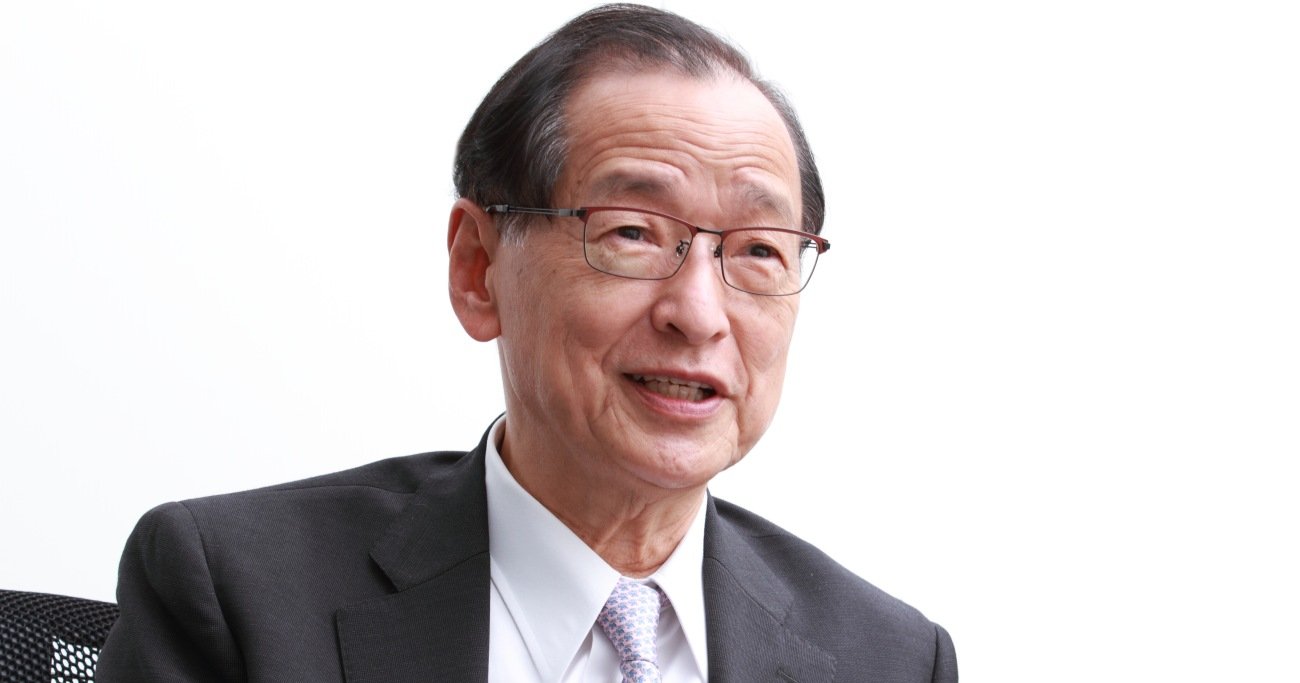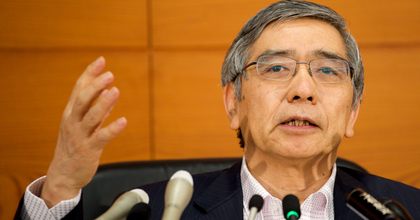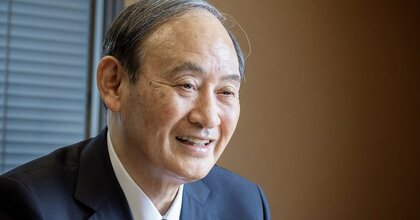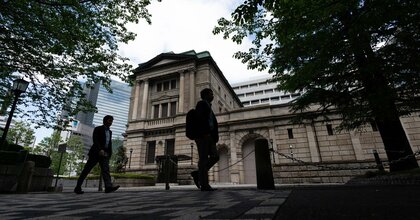Originally published in Japanese on May 7, 2022
Losing potential
TAKEDA: Some have called for the Bank of Japan (BOJ) to raise interest rates to halt the yen’s depreciation, which may cause energy and food prices to skyrocket. However, the BOJ announced that it will continue unlimited fixed-rate operations to purchase Japanese government bonds (JGBs) at 0.25% every day.
YAMAGUCHI: The Japanese economy is relatively weak compared to that of the U.S. or Europe. It is difficult to tighten monetary policy when economic conditions can hardly be said to be recovering, so I can understand the BOJ’s hesitation to a certain extent.
However, if in the future a recovery is in view and there is no doubt that prices will rise, they will need to think about fine-tuning the monetary policy while maintaining the general direction of easing.
TAKEDA: Monetary policy is not the only factor affecting foreign exchange rates, but can the BOJ stick to its position even though the yen is weakening so rapidly?
YAMAGUCHI: It is unlikely that the BOJ would tighten monetary policy only because of the depreciation of the yen. I don’t think it thinks about using monetary policy just to control the yen’s value on exchange markets.
What is important is whether the trend of price hikes without an economic recovery is sustainable. If the lower yen leads to more exports and results in an economic recovery, pushing up prices, the BOJ will likely alter its stance.
TAKEDA: The BOJ currently allows for the 10-year JGB yield to move up to 0.25% while staying centered on 0% through its yield-curve control (YCC) framework. When you say “fine-tuning,” does that refer to decisions like raising the target from 0% or widening the acceptable range of fluctuation?
YAMAGUCHI: In the U.S., the Federal Reserve Board has been allowing for rising interest rates with tapering [scaling back quantitative easing, including reducing the purchases of government bonds]. Even if the BOJ cannot decisively abolish YCC, it can consider widening the range of fluctuations as an alternative in the future.
TAKEDA: Since Governor Haruhiko Kuroda took office about nine years ago, the BOJ has maintained its unconventional monetary policy of large-scale quantitative and qualitative monetary easing, including the purchase of JGBs and exchange-traded funds. This has partially contributed to the depreciation of the yen. But the BOJ still has not met its 2% inflation target. Is it possible to push prices up solely through monetary easing?
YAMAGUCHI: I don’t believe that it is possible. I think the 2% inflation target can be achieved only as a result of an increase in both prices and the potential growth rate, which requires not only monetary policy but also growth strategies to shore up the real strength of the economy.
This was also stated in the joint statement between the government and BOJ in January 2013.
Although the government produced various growth strategies, they proved generally unsuccessful. Indeed, the potential of the Japanese economy has weakened, rather than strengthened. The price index is like the body temperature of an economy, reflecting its underlying strength, so we cannot meet the 2% goal under such conditions.
TAKEDA: Then what is one measure the government should have taken?
YAMAGUCHI: I think it was critical to prompt the metabolism of companies through deregulation. By bringing in new thinking, productivity would increase, technological innovation would advance and there would be greater expectations for growth.
That will make the companies feel more positive about raising wages, meaning consumers could expect more income. I believe that prices will rise only after such conditions are met.
TAKEDA: What are your thoughts on the advantages and disadvantages of unconventional monetary policy?
YAMAGUCHI: Unconventional monetary policy resulted in higher stock prices and a weaker yen, which significantly brightened the outlook of corporate managers. The measures were initially effective in that sense. It also helped the market maintain its stability with the enormous money supply. Easing the anxiety in the financial market after the COVID-19 shock can also be considered an achievement.
However, the liquidity that came with monetary easing did not necessarily promote business fixed investment or consumption. Money flowed into the financial and capital markets, resulting in higher stock prices and lower JGB yields. With no expectations that growth would pick up, the continued ultra-low interest rates also prevented financial institutes from taking risks in lending.
Overall, the money flowed into the stock market, real estate market, and dollar-based overseas financial markets, and created a bubble-like situation in the market without boosting the real economy. Thus, the market’s price discovery function to efficiently allocate funds was lost.
I think that was a serious disadvantage.
TAKEDA: What were the adverse effects of the loss of the price discovery function and distortions in fund allocation?
YAMAGUCHI: The potential of the Japanese economy weakened. The stimulative effect of monetary easing comes through the advance absorption of future demand, providing more momentum for an economic recovery. However, the continuous use of future demand in this way naturally tapers down demand in the long term. That is why the potential of the economy is weakening.
Losing confidence
TAKEDA: In other words, prolonged monetary easing resulted in the depletion of future demand.
YAMAGUCHI: At first, the lower interest rates that come with monetary easing will lead to more business fixed investment by companies (such as the purchase of machine tools), improving the earnings of the companies that receive that investment and, in turn, the business fixed investment by those companies also grows. With low interest rates, consumers will move forward investments in housing. However, continuing this uses up the demand in advance.
Seeing that, companies will lose confidence in their own growth potential and that of the Japanese market. According to the Annual Survey of Corporate Behaviors conducted by the Cabinet Office, companies forecast Japan’s real economic growth rate as 1.1% and 1.0% for the next three years and five years, respectively.
Losing confidence in growth potential, companies will shift their resources to securing their cash reserves for the future. Thus, although wages are increasing slightly this year, companies are generally reluctant to increase pay. Business fixed investment also remains sluggish.
TAKEDA: What would have been the right combination of monetary and fiscal policy?
YAMAGUCHI: Again, policy should have promoted deregulation to encourage the metabolism throughout the entire economy. That may result in an increased number of bankruptcies and unemployed people. In this context, it is important to protect the workers, not the company. Unemployment benefits are important, and it is also necessary to enhance vocational education to enable workers to find jobs in different sectors.
TAKEDA: Was an inflation target necessary to begin with?
YAMAGUCHI: I think it is important that price indices, especially the consumer price index, stay above zero. I also believe there is some significance in an inflation target that aims to achieve moderate growth.
TAKEDA: When consumers expect prices to drop in the future, they hold off on spending. Of course, hyperinflation is unwelcome, but moderate inflation is desirable in terms of individual consumption behavior. Is that correct?
YAMAGUCHI: On top of that, an increase in wages will stimulate consumption behavior. That leads to growing corporate earnings, resulting in a virtuous cycle of increased business fixed investment and employment by companies.
However, I feel it is rather odd to endlessly go on with monetary easing only for the sake of achieving the 2% goal.
TAKEDA: Because of prolonged quantitative easing and the ongoing purchases of massive amounts of JGBs and other assets, the BOJ’s balance sheet is now the largest relative to gross domestic product (GDP) among major countries. Is it possible to normalize, or scale down, the balance sheet?
YAMAGUCHI: I think we should refrain from using the term “normalize” to make the scaling down of the balance sheet itself an objective. I believe the only way to make policy is to consider it based on the actual situation we are facing.
If the economy starts to recover, you should scale down the balance sheet by reducing JGB purchases and not reinvesting the funds from reimbursement. We should try to revise the easing policy according to the economic situation of the time.
TAKEDA: Some also believe that the BOJ is unable to raise interest rates because it must curb the cost of interest payments by the government [which currently holds a massive amount of outstanding debt].
YAMAGUCHI: When you make an assertion that the balance sheet must be scaled down regardless of the actual conditions of the economy, that may happen. However, if the economy recovers and interest rates rise in line with price increases, I believe the fiscal authorities must accordingly accept increases in interest rate payments.
It is important that the fiscal authorities also consider that possibility, show a mid- to long-term roadmap to improving public finances and gain the understanding of the public. The current plan is based on an optimistic economic forecast, and it must be revised from a more realistic perspective.
TAKEDA: You aren’t concerned about government pressure on the BOJ not to raise interest rates?
YAMAGUCHI: I wouldn’t say the risk is zero. However, if you cannot raise interest rates when prices hikes start to pick up, prices will increase even faster.
With society getting older, the Japanese population’s tolerance for price increases cannot be too high. People’s frustration will build up. Even now the government is being forced to take measures to deal with rising prices.
TAKEDA: While the government is working to deal with price increases, the BOJ is holding down interest rates by purchasing JGBs at a fixed yield every day. Curbing the increase of interest rates invites the depreciation of the yen, which accelerates price increases. Some point out that the government and the BOJ are moving in different directions.
YAMAGUCHI: I mentioned earlier that the price discovery function of the market is impaired because of large-scale monetary easing. Purchasing JGBs at a fixed yield and YCC all take part in hindering the price discovery function.
Looking at how the market forms interest rates or prices, you can see that it is forecasting trends in the Japanese economy, prices and foreign exchange. The BOJ must carefully pay attention to such information.
In that sense, is it proper to carry on with the daily fixed-rate purchasing operation, keeping yields within 0.25%? I do have strong doubts about it.
(Originally written in Japanese by Takahiro Takeda, translated and edited by Connor Cislo)
Hirohide Yamaguchi is chairman of Nikko Research Center, Inc. Born in 1951, he joined the Bank of Japan in April 1974. After working as the head of the Financial Division, manager of the Takamatsu Branch, and head of the Monetary Affairs Department, he advanced to the position of deputy governor in October 2008. He has held his current position since July 2013.











